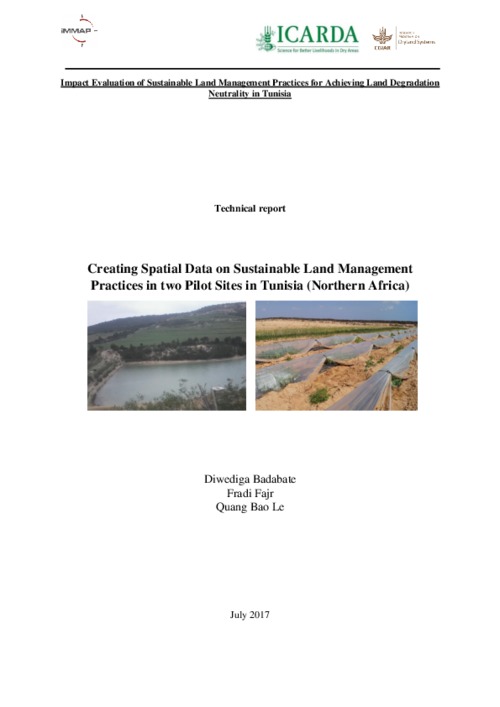Resource information
Many efforts have been invested in the Dry Areas to combat land degradation and desertification. Different strategies and approaches for conserving soil and water and restoring degraded lands have been developed by local, national and international agents to synergise efforts towards land degradation neutrality achievement. Tunisia is a dryland country facing a high risk of land degradation over more than 50% of its territory. It is a country with high investment programs for soil and water conservation (SWC), and large level adoption of SLM practices. With some successes and failures experienced, there are currently no sufficient information that could allow knowledge based assessment of such investments and commitments. The need for up- and out-scaling success stories is challenged by the lack of real time spatial data on SLM practices. In this work, the main objective is to make an inventory and document the widely adopted SLM practices in Tunisia, and develop a spatial database of such practices for impact assessment and scaling out/up. The work was based on literature review, field based data, secondary data from national institutions, and high resolution satellite images. The work was conducted in two pilot sites (Medenine governorate in South-Eastern and Zaghouan governorate in Centre-North) located in different socio-environmental contexts of Tunisia. Many technologies exist in the context of Tunisia, showing a high diversity of initiatives to combat land degradation and ensure sustainable lands. In this works, eighteen (18) SLM practices were investigated in two pilot sites. This diversity emerges from the synergies from land users, researchers, policy-makers and donor agencies, in order to improve land management, conservation and restoration in arid areas of Tunisia. Each specific context revealed specific SLM practices, even though there exist some similarities. Some practices are very common, and widespread whereas others are very locally applied. These SLM practices target specifically soil and water conservation, the control of sand dune mobility, the improvement of degraded rangelands, the collection and storage of runoff water, and the improvement soil surface cover through tree plantation. Based on field observation, there is a high adoption level, which should be encouraged and supported by scientific documentation for policy orientation in order to achieve land degradation neutrality in Tunisia.


